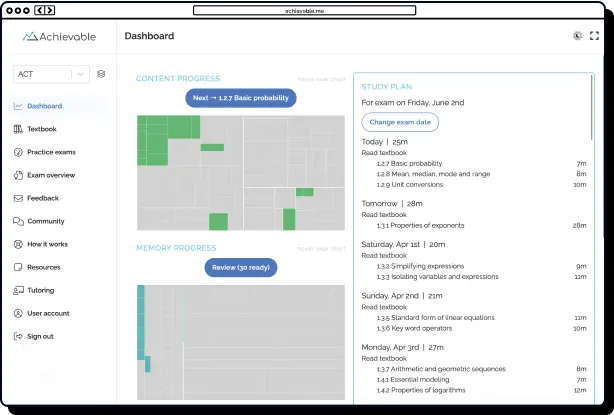
USMLE Step 1 vs 2: Everything you need to know




If you’re in med school, or even just considering your future in medicine, you’ve probably encountered countless discussions about the USMLE Step 1 and Step 2. These exams are pivotal landmarks on the path to becoming a licensed physician, as passing both is a core requirement for legally practicing medicine in the U.S. Understanding the differences between the USMLE Step 1 and Step 2 is vital for anticipating the content and challenge presented by these two sequential assessments.
Below is your straightforward breakdown of USMLE Step 1 vs. Step 2. We’ll explore recent exam changes, crucial test information, and how to build a winning approach for both Steps.

Step 1: The Basics
Step 1 focuses on the scientific basis of medicine. Think of it as your foundation, or the “why” behind everything you’ll see later in the hospital or doctor’s office.
What it covers
- Biochemistry, physiology, anatomy, microbiology, immunology, pathology, pharmacology, and genetics
- Integrates basic sciences into clinical-style questions
- Vignette-heavy with a focus on mechanisms and “what’s going on in the body”
When you take it
- Typically, after your second year of med school, before clinicals
Scoring
- Pass/fail as of 2022
- No numerical score reported to residency programs
Why it still matters
Just because there’s no numerical score doesn’t mean Step 1 is low-stakes. Developing a dedicated Step 1 study schedule shouldn’t be overlooked in your preparation: you have to pass this exam to progress in med school. Building a strong knowledge base not only ensures you pass but also makes a major difference when you reach Step 2 CK.
Whether students find Step 2 harder or easier than Step 1 often depends on how solid their foundation is. The better you master the material early on, the easier it becomes to apply that information in a clinical setting later, which is crucial for success on Step 2 CK and beyond.

Step 2 CK: Clinical knowledge is king
Step 2 CK (Clinical Knowledge) is where things get real. This is the test that most closely mirrors what you’ll actually do as a physician. It’s not just about memorizing enzyme pathways or abstract disease risk factors: it’s about deciding how to treat the patient in front of you. Technically, you can take the Step 2 CK at any time, even before taking Step 1, although it’s recommended to gain practical clinical experience before attempting the test.
What it covers
- Internal medicine, surgery, OB/GYN, pediatrics, psychiatry, and emergency medicine
- Epidemiology, ethics, biostatistics, and patient safety
- Focused on diagnosis, management, and the next best step in care
When you take it
- Usually, during or after your 4th year of medical school, once clinical rotations are complete
Scoring
- Still numerically scored
- Used by residency programs as a primary comparison tool for applicants
Why it’s more important now than ever
With Step 1 now reported as pass/fail, Step 2 CK stands as the only numerically scored, standardized exam that residency programs rely on to compare applicants. As a result, Step 2 CK is crucial for demonstrating your mastery of USMLE questions that assess clinical knowledge, decision-making, and the real-world application of medical concepts. Residency program directors now scrutinize your Step 2 CK score more closely to assess your preparedness, particularly for competitive specialties. The significance of your Step 2 CK performance cannot be overstated during the residency application process. Understanding the differences in focus and application for each test can help inform your study approach.
How to prep for each exam
Given the distinctions between Steps 1 and 2, you’re going to need different strategies to master each board exam. The way you study and the mindset you bring should be responsive to the demands of each test.
For Step 1
- Use flashcards and study prep courses
- Focus on long-term memorization, mechanism-based learning, and high-yield facts
- Start early and review consistently. This is not the exam to cram for.
For Step 2 CK
- Review explanations carefully
- Do practice NBME questions to get used to the exam’s style and pacing
- Focus on clinical reasoning: understanding why something is the next best step, not just memorizing treatments
Step 1 prep may feel more academic, while Step 2 requires you to put your knowledge into action. Adjust your USMLE study plan accordingly, and remember that both exams take several hours to complete. Be sure to set aside time to take practice tests and accustom yourself to the structure and pace of each exam.
Which one matters more?
Preparing for both exams requires dedicated time and effort, but high scores on the Step 2 are more consequential.
With the USMLE Step 1 now pass/fail, residency programs rely heavily on Step 2 CK scores as the primary objective metric for comparing applicants. Step 2 CK evaluates your clinical knowledge and demonstrates how well you’re prepared for patient care, qualities fundamental to practical settings.
Still, don’t underestimate Step 1. It’s a vital graduation requirement, and a strong foundation gained from constant review will make tackling Step 2 CK much easier. Building a solid science base lays the groundwork for success in clinical scenarios.

Closing thoughts
Here’s the bottom line when comparing Step 1 vs Step 2:
- Step 1 builds your science and medical knowledge, serving as your launch pad for future clinical reasoning.
- Step 2 CK showcases your ability to apply that knowledge to real patient care, helping you stand out to residency programs.
Both exams are important in their own ways and require a focused USMLE study schedule tailored to your strengths and needs. Whether you find Step 2 CK harder or easier than Step 1 depends on your background and how well you’ve prepared with practice USMLE questions and a thorough review.
Prepare thoroughly, give yourself enough time to follow your personalized study plan, and remember not to compare your journey to anyone else’s. Everyone’s path to mastery is unique, but with the right preparation, you’ll be ready for the Step 1, Step 2 CK, and eventually Step 3, the final exam in the USMLE sequence. If you ever feel overwhelmed, remember: you’ve made it this far, and you’re fully capable of handling whatever these USMLE exams bring your way.

